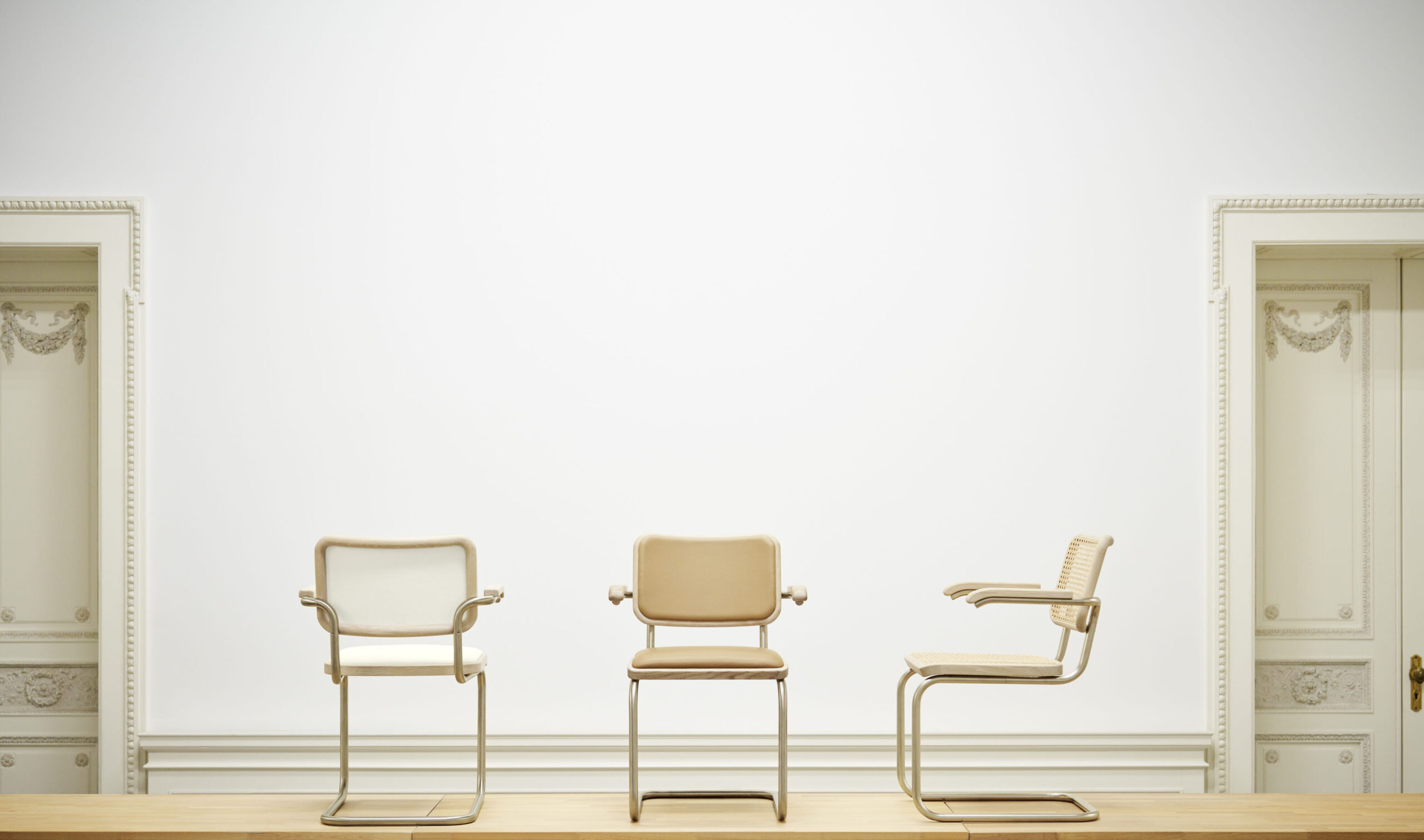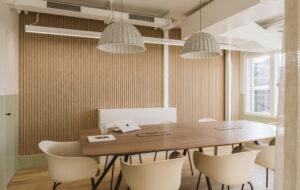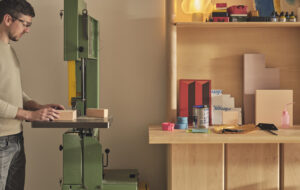 The façade is made up of triple-glazing and triangular bronze-coloured steel panels|The proposed 13-storey building is entered through a 12-metre-high lobby|The office floor is arranged in two-storey modules||
The façade is made up of triple-glazing and triangular bronze-coloured steel panels|The proposed 13-storey building is entered through a 12-metre-high lobby|The office floor is arranged in two-storey modules||
Foster + Partners‘ design for RMK‘s HQ in Yekaterinburg, Russia, forgoes the open-plan office concept in favour of rooms on a “more intimate, domestic scale”.
The proposed 13-storey building for the leading copper producer is entered through a 12-metre-high lobby, and flanked by visitor lounges and product displays. A central hallway dissects the long axis of the building and functions as a breakout space with lounge seating with city views through the glazed lift shaft.
The office floor is arranged in two-storey modules on either side of the hallway in a series of rooms, described as “house for staff”. On the top level, this space is lit from above and acts as a flexible space for company-wide gatherings and events.
The office walls are made from faceted glass panels with metal edgings to echo the shapes in the buildings façade. To create a domestic atmosphere, the interiors are made up of warm and tactile materials such as wood, stone and natural-toned textiles, and conventional down lighting has been replaced by task lights and indirect lighting.
The modules, which were designed following analysis of the client’s operations, are designed to let inoptimum levels of natural daylight. They were developed in conjunction with the in-house engineering team to enable their rapid construction.
The façade is made up of triple-glazing and triangular bronze-coloured steel panels, each ten- by six-metre cladding unit that span a two-storey office module, echoing the interior layout. The panels are textured to create a subtle patina and subtly change according to the time of year.
In response to wide shift in temperatures between seasons, the balance between solid and glazed areas is designed to maximise low-level winter sun, while blocking the heat of direct sunlight during the summer.
The triangulated form of the panels reference the chemical structure of copper and have inspired the company’s new logo.
The site is located next to a public park, overlooking the city and river, and the design links the building to its setting. Greenery is planted right up to the base of the building to create a private garden for staff. Further, the landscaping reflects the cellular internal arrangement to create a series of “external rooms” that offer staff a place to relax and eat lunch.
























